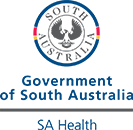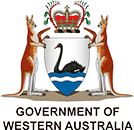Metabolic syndrome
Key facts
- Metabolic syndrome is a collection of conditions that increase the risk of serious health issues.
- These include high blood pressure, weight around your abdomen (belly), high blood sugar, low 'good' cholesterol in your blood and high 'bad' cholesterol.
- The exact cause of metabolic syndrome is not yet understood, but you are at a higher risk if you have an inactive or unhealthy lifestyle.
- Sometimes your genes can play a role in the development of metabolic syndrome.
- Talk to your doctor about how to improve your lifestyle to manage and prevent metabolic syndrome.
What is metabolic syndrome?
Metabolic syndrome is a group of risk factors that together increase your chance of developing long-term, life-threatening conditions such as stroke, heart disease and type 2 diabetes.
These risk factors are:
- high blood pressure
- excess abdominal (belly) weight
- low levels of 'good' cholesterol (HDL cholesterol)
- high triglyceride levels
- type 2 diabetes or insulin resistance (where your cells don't respond to insulin and your blood sugar levels rise)
If you have 3 or more of these risk factors, you have metabolic syndrome. Metabolic syndrome is also known as syndrome X or insulin-resistance syndrome.
People with metabolic syndrome are more likely to have a heart attack, stroke, type 2 diabetes or chronic kidney disease than people without the condition.
Metabolic syndrome affects up to 1 in 3 adults in Australia and also affects children and adolescents.
What are the symptoms of metabolic syndrome?
Some of the disorders that contribute to metabolic syndrome have obvious signs and symptoms. Others, such as high blood pressure and high cholesterol do not show such obvious symptoms.
A build-up of fat around the waist is a sign of metabolic syndrome. This is known as abdominal obesity or central obesity. It can be diagnosed by measuring your waist circumference with a tape measure. Your doctor can also measure your waist for you. The target is different for males and females, and for people with different ethnicities.
You may have high blood sugar as a result of insulin resistance. This can lead to symptoms of type 2 diabetes such as:
- increased thirst
- frequent urination
- fatigue
- blurred vision
CHECK YOUR SYMPTOMS — Use the Symptom Checker and find out if you need to seek medical help.
What causes metabolic syndrome?
It is not clear what causes metabolic syndrome. Scientists think that it happens when your body's cells don't respond properly to insulin. Insulin is a hormone that is responsible for controlling your blood sugar levels. When this system doesn't work well, it's called insulin resistance. If you're insulin resistant, your body has trouble removing sugar from your blood, leading to higher blood sugar levels. This increases your risk of serious health issues.
Your risk of developing insulin resistance may be because of factors you can control such as:
- poor diet
- lack of physical activity
- smoking and drinking excessive amounts of alcohol
- shift work
Some risk factors are outside of your control such as:
- age
- genetics
- history of diabetes
- polycystic ovarian syndrome (PCOS)
An inactive lifestyle with a poor diet is thought to be a key cause of metabolic syndrome.
NEED TO LOSE WEIGHT? — Use the BMI Calculator to find out if your weight and waist size are in a healthy range.
When should I see my doctor?
If you think you might have metabolic syndrome, it is important to see your doctor.
Medicine and lifestyle changes can treat metabolic syndrome. They reduce the risk of developing heart disease, stroke, type 2 diabetes and chronic kidney disease.
Medicines may also help treat some of the individual risk factors that make up metabolic syndrome, such as high blood pressure and poor cholesterol levels.
Your doctor can advise you on appropriate lifestyle changes and may refer you to a dietitian or exercise physiologist.
FIND A HEALTH SERVICE — The Service Finder can help you find doctors, pharmacies, hospitals and other health services.
How is metabolic syndrome diagnosed?
A person may be diagnosed with metabolic syndrome if they have at least 3 of the following:
- high waist circumference
- raised level of triglycerides, which are a type of fat in the blood
- high blood pressure
- low levels of HDL cholesterol (good cholesterol)
- type 2 diabetes or insulin resistance (increased blood sugar after fasting)
Your doctor will measure your risk of diabetes and heart disease. They might:
- measure and assess your waist circumference
- take your blood pressure
- refer you for blood tests to measure your cholesterol, triglycerides and blood sugar levels
How is metabolic syndrome treated?
The treatment for metabolic syndrome focuses on the same lifestyle changes that can prevent it. By changing some things in your daily life, you may be able to reverse metabolic syndrome.
Recommended lifestyle measures include:
- maintaining a healthy weight or losing weight if you need to — this should improve insulin resistance, lower your blood pressure and improve cholesterol levels.
- doing regular exercise for at least 30 to 60 minutes on most days — this may help you reduce weight, improve cholesterol and blood glucose levels and help lower blood pressure. Anyone new to exercise should check with their doctor before starting.
- stopping smoking, as smoking increases the risk of metabolic syndrome
- reducing alcohol intake
Another important lifestyle change that can help is eating well. This helps with weight loss, improving cholesterol levels and reducing your risk of type 2 diabetes. Tips to improve your diet include:
- reducing calorie intake if you are overweight
- reducing saturated fat and salt intake
- eating a range of whole grains, fruits and vegetables and lean protein sources
Read more about healthy food swaps that you can make.
In children and adolescents, lifestyle changes like reducing screen time and increasing sport can reduce their risk of developing metabolic syndrome later in life.
Are there any medicines to treat metabolic syndrome?
There are no medicines that specifically treat metabolic syndrome. You may need medicines to treat some of the contributing conditions, such as high blood pressure or high cholesterol.
Talk to your doctor to learn more about medicines to help you to control your metabolic syndrome.
ASK YOUR DOCTOR — Preparing for an appointment? Use the Question Builder for general tips on what to ask your GP or specialist.
What are the complications of metabolic syndrome?
Being diagnosed with metabolic syndrome means that you are at risk of developing heart disease, type 2 diabetes, chronic kidney disease and stroke. You might then develop any symptoms associated with these diseases.
Can metabolic syndrome be prevented?
Living a healthy lifestyle is the most effective way to prevent metabolic syndrome. The risk factors for metabolic syndrome can cause further complications. For example, being overweight can lead to insulin resistance, which can then raise 'bad' cholesterol levels and increase blood pressure.
Improving your habits, such as getting regular exercise, eating a balanced diet, and maintaining a healthy weight, can help prevent these risk factors or delay them.
It's important to visit your doctor for regular check-ups so they can monitor your cholesterol, triglycerides, blood sugar and blood pressure and help keep everything in check.
Resources and support
For more information and support, try these resources:
- LiveLighter is a program that aims to encourage Australians to make changes to what they eat and drink and to be more active.
- Learn how to Exercise Right and lead a healthier lifestyle. You can find an accredited exercise professional who is right for you.
- The Australian Dietary Guidelines have up-to-date information about the kinds of foods you will keep you eating healthy.
- Get Healthy NSW is a free telephone service that is available in NSW. It is staffed by qualified health coaches who supports adults to make lifestyle changes regarding healthy eating, physical activity and reaching and/or maintaining a healthy weight.
- Better Health Coaching Service is a free and confidential telephone service that is available in South Australia. It supports South Australians to be active, eat well and reduce the risk of chronic disease.
- The Life! program is a free program to support Victorians in making everyday decisions towards a healthier lifestyle.
A dietitian can design a personalised eating plan for you to lower your risk of metabolic syndrome. Find an accredited practising dietitian from the Dietitians Association of Australia, or call 1800 812 942.
If you smoke, your doctor can help you quit. You can also call the Quitline on 13 7848 to talk to a counsellor or use its online chat service.
The Heart Foundation has a guide on how to measure your waist circumference, which is part of measuring your BMI.
Other languages
- Read about healthy eating and active living in Arabic, Vietnamese, Chinese Simplified and Chinese Traditional on the NSW Government website and the Western Sydney Local Health District website.
- The Australian guide to healthy eating is available in community languages on the Health Translates website.
- Diabetes Australia has a translated guide for making healthy food choices available in Greek, Italian, Spanish, Arabic, Chinese and Vietnamese.
Aboriginal and/or Torres Strait Islander peoples
- Aboriginal Quitline helps smoking Aboriginal and Torres Strait Islander people to quit.
- Visit the Australian Indigenous HealthInfoNet to find more information on living a healthy lifestyle to reduce bodyweight, diabetes and cardiovascular disease.
Learn more here about the development and quality assurance of healthdirect content.
Last reviewed: October 2024

















